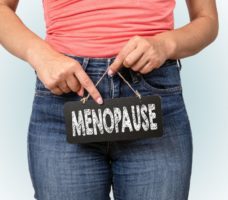Tolle Totum
Deborah McKay, ND
In Part 1 of this case study, published in December 2019, I wrote about a 50-year-old woman who presented in January 2019 with a laundry list of health complaints. Some were chronic, such as recurrent sinus infections, GI disturbances, depression/anxiety, and symptoms of low thyroid function (she had untreated Hashimoto’s). However, a year of severe stress and the onset of perimenopause had added to the pile, including weight gain, a foggy brain, and the feeling that her entire life was crumbling.
One week after our initial consultation, she would depart for
Mexico for a 2-week yoga retreat. Meanwhile, I educated her about blood sugar
swings and small intestinal bacterial overgrowth (SIBO), recommended some dietary
adjustments and supplements, referred her to Dr James Wilson’s book (Adrenal
Fatigue: The 21st Century Stress Syndrome), and asked her to get a blood draw for lab tests before
leaving for Mexico.
First Follow-up
Dorothy returned to my office in February 2019, 1 month
after her initial visit. She noted a “lack of joy” during her yoga retreat, and
also caught a Mexican “bug” that gave her debilitating diarrhea. The menu of
vegan raw foods had made it worse. She put herself on the BRAT diet (ie,
bananas, rice, applesauce, toast) at her first opportunity, which had eased the
diarrhea, although a stomach ache had persisted. Activated charcoal was easing her
symptoms.
She had scored positive on 15 of 18 traits for adrenal fatigue,
listed in Wilson’s book.
Per my request, she had tracked her metabolism (via pulse,
temp, mind) after starting on liothyronine (L-T3). Unfortunately, this was the
same time that the “Mexican bug” was giving her fevers. Her dosing of L-T3 had
been sporadic despite my recommendation of 3 tablets daily (15 mcg total). Instead,
she had been taking 4-6 tablets per day, often loading up in the evening to
make up for missed doses earlier in the day. She noted some sleep disturbance as
a result, but no tachycardia or anxiety. There was palpable sadness in
Dorothy’s presence.
Laboratory Evaluation
Prior to her Mexico trip, her labs indicated pretty good health overall, except for autoimmune thyroiditis (see Table 1). In contrast to her 2017 labs, her ovarian hormones measured normal despite the lack of menstrual periods for “many moons now.” We planned to check FSH and LH at her next lab visit.
Table 1. Patient’s Laboratory Results
| Lab Marker | Result |
| TSH | Higher than optimal (2.18 mIU/mL); 1.0 µIU/L is my target “optimal” |
| Free T4 | Low-normal (0.97 ng/dL) |
| Free T3 | Low-normal (2.4 pg/mL) |
| Reverse T3 | High-normal (17.1 ng/dL) |
| RT3/Free T3 ratio | High (7.1) |
| Anti-TG antibody | High (74.4 IU/mL) |
| Anti-TPO antibody | High (41 IU/mL) |
| LDL-cholesterol | High (145 mg/dL) |
| HDL-cholesterol | Good (94 mg/dL) |
| Fasting glucose | High-normal (96 mg/dL) |
| Fasting insulin | Normal, but poor effect (5.0 mIU/mL) |
| Glucose x Insulin |
Borderline insulin resistance (480); insulin resistance = 507.6 |
| HbA1c | High-normal (5.5%) |
| Fibrinogen | High-normal (315 mg/dL) |
| 25-hydroxyvitamin D | Low-normal (39.8 ng/mL) |
| Ferritin | Low-normal (47 ng/mL) |
| Hemoglobin | Low-normal (13.1 g/dL) |
| Hematocrit | Low-normal (39.1%) |
| DHEA-S, serum | High-normal (225.5 µg/dL) |
| Progesterone, serum | Low-normal (0.3 ng/mL) |
| Testosterone, total, serum | High-normal (30.6 ng/dL) |
| Estradiol, serum | OK (75.0 pg/mL) |
| Cortisol, 9 AM, serum | Low-normal (11.9 µg/dL) |
(TSH = thyroid-stimulating hormone; T4 = thyroxine; T3 =
triiodothyronine; TG = thyroglobulin; TPO = thyroid peroxidase; HbA1c =
hemoglobin A1c)
Impressions
My diagnoses included functional hypothyroidism (ie,
euthyroid sick syndrome), hypercholesterolemia, and acute gastroenteritis.
Although she still tended toward hyperglycemia, this was under
better control now. In my experience, elevated LDL-cholesterol is mostly
associated with high carbohydrate intake. The high-normal fibrinogen suggested systemic
inflammation, which I often see along with fluctuating glucose; in Dorothy’s
case, it could also be related to Hashimoto’s and GI imbalances.
She clearly still had functional hypothyroidism. I suspected
that the Hashimoto’s was impairing her thyroid gland’s ability to respond to
TSH, as indicated by low Free T4 in the presence of high-normal TSH. She also
had an unfavorable ratio of Free T3 (FT3) to Reverse T3 (RT3). Thyroxine (T4)
can convert to either active triiodothyronine (T3) or inactive Reverse T3. I
look for an optimal FT3/RT3 ratio of 3.5-4.0. I suspected that Dorothy’s
emotional distress and the inflammation resulting from Hashimoto’s and
irritable bowel syndrome were contributing to an over-conversion of T4 to RT3. She
was trending toward iron deficiency anemia, as evidenced by low-normal levels
of Hbg, Hct, and ferritin. I commonly see this in SIBO, due to intestinal
malabsorption and/or iron sequestration by dysbiotic organisms. An elevated
DHEA-S suggested persistent stress.
Plan
I suspected Dorothy’s sporadic timing of her L-T3
prescription, especially the evening loading, was causing fluctuations in
metabolism and sleep disturbances. I thus recommended that she spread out her
dosing more evenly throughout the day, with a smaller dose of L-T3 in the
evening to aid relaxation. I suggested aiming for 30-40 mcg/day, but to self-monitor
body, mind, and metabolism in order to stay comfortable.
For daytime focus and stress management, I prescribed a
proprietary adrenal support supplement containing key nutrients and Eleutherococcus senticosus, Glycyrrhiza glabra, and Coleus forskohlii, to be taken early morning
(along with thyroid) and at lunch.
It’s always important to support the adrenals when starting a
patient on thyroid hormones. This is because normalizing thyroid function will
often speed up metabolism faster than the HPA axis is able to re-regulate
itself. Not doing so has caused some people with adrenal insufficiency to land
in the hospital (not on my watch!).
For the infectious diarrhea and chronic constipation, Dorothy agreed
to treatment of probable SIBO/SIFO using 2 proprietary herbal formulations –
one containing Thymus vulgaris, Origanum vulgare, and Salvia officinalis; and the other
containing berberine HCl, Berberis
aquifolium, Coptis chinensis, and
other berberine-containing herbs, and a mixture of Chinese herbs to support
detoxification and elimination. I suggested taking 2 tablets of each, twice
daily, for 4 weeks. Although various herbal protocols are prescribed for SIBO/SIFO,
I prefer to follow my classmate, Dr Allison Siebecker’s, recommendations and
list of published research.1
I coached her on managing Herxheimer symptoms and using
charcoal to adsorb biotoxins (though away from thyroid dosing). I encouraged
her to read about and follow a low-FODMAP diet. We would consider a definitive
lactulose breath test for SIBO when she was ready.
I recommended she take a multivitamin/multimineral, including
iron bisglycinate, with lunch. I cautioned her about magnesium’s laxative
effect.
Finally, I had Dorothy fill out a questionnaire designed by Julia Ross (see her books, The Mood Cure and The Cravings Cure). I hoped to start her soon on targeted amino acid therapy (TAAT).
After she left, I scored her TAAT questionnaire. According to
Ross’ guidelines, her #1 need was for catecholamines, in this case both thyroid
and adrenal hormones. Not surprisingly, the questionnaire indicated that
Dorothy’s #2 need was blood glucose stabilization. I planned to mail her some
free samples of a proprietary formulation containing chromium, vanadium,
alpha-lipoic acid, Gymnema sylvestre,
Opuntia streptancantha, and Silybum
marianum. This was to be taken with
each meal, along with glutamine, to reduce glucose and insulin surges. Her #3
need, according to the questionnaire, was for GABA, for calmness and
relaxation. She was already using ashwagandha and L-theanine, but straight GABA
is stronger and would likely give her greater benefit. I suggested taking it
only in the evening to avoid daytime drowsiness, until she was accustomed to
its effects. Theoretically, GABA shouldn’t cross the blood-brain barrier (BBB).
However, almost all of my patients with leaky gut appear to also have a leaky
BBB.
In light of the emotional underpinnings of Dorothy’s symptom
profile, and to assist her in moving forward toward her goal of
self-improvement, I was eager to teach her a proprietary technique of “tapping”
in the very near future. This technique can help “erase” an unwanted emotion, and
only requires about 30 minutes of an office visit.
In about 3 months, we would re-assess ovarian function and
thyroid dosing via lab tests.
Second Follow-up, 1 Month Later
Dorothy was following a low-FODMAP diet and exercising
positive internal self-talk. She was enjoying this approach to eating. Her menses
had returned unexpectedly the previous month – the first time in 5 months – and
it was a bad period with severe cramping and heavy bleeding.
Her symptom survey showed continued fatigue, insomnia, dry
skin, and intolerance of both heat and cold, although there were very slight
improvements across the board. She was currently taking a total of 35 mcg of (three
5-mcg tablets early morning plus 4 tablets mid-day). Her heart rate was
typically in the low 70s; her hands remained cold; and her mid-day temps were
still in the 97º range
(well below the optimal 98.6º
F).
She seemed dejected. She was conversing better – not
conspicuously slow any more.
Impressions
Current diagnoses included IBS/SIBO, postmenopausal bleeding,
and euthyroid sick syndrome. Today’s issues were mostly psychosocial and
emotional. Her TAAT for brain chemistry was going to be important for her well-being.
Plan
I suggested continuing her low-FODMAP diet for now, to
reduce SIBO/SIFO symptoms. In case of future dysmenorrhea, I recommended using Viburnum opulus (cramp bark) liquid
extract, early and often, to prevent the “wind-up phenomenon” caused by prostaglandins.
We had a long, heartfelt discussion about SIBO and her dietary
choices, and about self-compassion vs self esteem. I referred her to Kristin
Neff, PhD,’s book and TEDx talk on self-compassion.
For her thyroid, I encouraged a slow upward titration of L-T3 toward
50 mcg daily, while continuing to track metabolism and body-mind symptoms.
Bothersome heart symptoms would be her sign to reduce the dose and call me.
I urged her to throw a party with other women when full menopause
arrived, celebrating that she was now queen of her own life. I also suggested
she plan on 5 years of well-balanced bioidentical hormonal replacement therapy
(BHRT) regardless of menopausal symptoms, for lifetime protection of bone
density and her cardiovascular system.
It is now internationally accepted that 5 years of BHRT, starting at the moment of menopause, yields lifetime benefits in these areas.2 Recall the nationwide panic in 2002 when the Women’s Health Initiative was abruptly cut short due to HRT-related deaths from cancers, heart attacks, and strokes.3 Those deaths, we now know, were due to using oral (not transdermal) equine estrogens (not human bioidentical) in combination with synthetic progestins (also not bioidentical). I have been using BHRT since Day 1 of my practice, and until these recent findings were published, I had to calm down a lot of anxious women. It’s now much easier to put their minds at ease.
Third Follow-up, 1 Month Later
Dorothy was feeling good overall, yet noted a strange
sensation of “living in a cocoon and fighting to get out.” This sounded to me
like mild dissociation. She was going through deep and powerful emotional
upheaval; in many ways this was her year of self-renewal.
She brought in questions about ionic silver, zinc, and liquid
iodine, all self-prescribed. Her mid-day temps were still in the mid-97s; and
her heart rate was often in the 60s, except when stressed.
Dorothy’s posture and presence seemed worn down. At the same
time, though, her eye contact, speech, and responsiveness were improved. She was
feeling more like “her old self” these days.
She requested more dietary guidance, so I recommended the books
The Vegetarian Myth by Lierre Keith, and Primal Fat Burner by Nora Gedgaudas.
Because of her elevated HbA1c and LDL-C and her history of
hypoglycemic symptoms, I urged her to limit her fruit intake, favoring
vegetables instead.
In terms of supplements, I shared my belief that the popularity
of high-dose iodine supplementation is not scientifically based, and suggested
she save her kelp drops in the event of nuclear fallout. I also urged restraint
with ionic silver, saving it for when it’s truly necessary, so that it wouldn’t
lose its effectiveness. I recommended that she start oral methylcobalamin and
to hold the tablets in her mouth before swallowing, for better absorption.
Dorothy tended toward anemia, and I suspected she also needed more methyl
donors due to likely MTHFR genetic abnormalities. I also recommended 15 mg/day
of zinc.
We further discussed the importance of optimizing thyroid and
adrenal function. I suggested continuing L-T4 at 25 mcg each morning; I also
suggested she continue the L-T3 at 25 mcg twice daily (early morning and
lunchtime), but to try adding an additional 5 mcg at bedtime to “strengthen” her
sleep cycles. Most of my patients report feeling feel more restored in the
mornings by doing this. She would continue to self-monitor.
We both felt that she was ready for an emotional breakthrough,
so we scheduled another visit for “tapping.”
Fourth Follow-up, 1 Month Later
In March 2019, 1 month later, Dorothy arrived at my
office, ready to learn the technique of tapping. She had already connected the
dots between childhood abandonment by her father with her adult inability to
bond with a long-term mate. At this visit, Dorothy appeared brighter and more
present than ever, and showed signs of improved physical and mental
health.
“Tapping” involves a preliminary brisk tapping all 10
fingertips against each other, followed by tapping one’s fingers on acupuncture
meridians in a prescribed pattern while concentrating on a particular problem
but with an imagined positive outcome. The goal is to clear unwanted emotions.
A sentence stating a problem and its resolution is formulated before each
tapping routine.
During the warm-up exercise, Dorothy could not perceive her own
Qi (typically felt as tingling),
which suggested an energetic blockage. When she tried to formulate her first
sentence for the technique, she immediately felt distressed. During the tapping
technique, Dorothy was unable to get traction until she directly acknowledged
her childhood abandonment. Her sentence was, “Even though my father abandoned
me, I still love and respect myself completely.” At the start, her self-rated
emotional distress was 10 out of 10, with tears flowing. On round 2, she scored
8 out of 10, feeling a tight throat. On round 3, she scored 5 out of 10, with
palpable unhappiness. Then, on round 4, her energy shifted visibly and her
emotional distress dropped from 10 to 2, and she noted “practically just empty
words.” At this point she was smiling and her energy was radiant.
This is the kind of miracle I routinely witness when I am able
to talk my patients into doing tapping with me. I love my work!
We ended by discussing the idea of taking drop-doses of Oplopanax horridus glycerite to help support
healthy personal boundaries. She declined for now. We also discussed doing
Buteyko breathing down the line as another way to keep anxiety under control.
I gave Dorothy a lactulose breath test, to be collected at home
ASAP. I suggested another blood draw for labs in a couple of months, or sooner
if she was curious.
Email Exchange with Patient, 5 Weeks Later
Five weeks later, Dorothy emailed me to say that she had
been having increased hot flashes several times daily for the past several
weeks. I recommended Cimicifuga racemosa
(black cohosh) twice daily, along with non-prescription estriol cream (0.75 mg
per pump), to be taken anytime up to twice daily. I explained that progesterone
cream (20 mg per pump) should be restricted to early morning, since transdermal
progesterone can increase cortisol, which in turn can increase anxiety.
I also recommended she take additional doses of the stress
management formula when needed, to reduce the likelihood of a hot flash.
I suggested we reevaluate her current symptoms and treatment plan
at her next office visit. As of this writing, she has not scheduled another
visit. She has also
stopped requesting Rx refills. It is my hope that high-dose L-T3 did what it
was meant to do: restore normal metabolism by chasing out Reverse T3, thereby
healing and rebalancing bodily tissues. It is rare for folks to continue on
high-dose L-T3 beyond a few months. When they feel like they no longer need it,
that’s typically an indication that healing has taken place.
In summary, it appears that Dorothy got what she came for… but
it wasn’t what either of us thought it would be. Her diminished mental
functions, which she attributed to menopause, cleared in response to emotional
healing and normalizing her thyroid function. Mostly, she was simply ready to
heal an old childhood wound at a time when she was restructuring her life. My
role here turned out to be a little bit of hormones and a lot of emotional
leverage.
References:
- SIBO – Small Intestine Bacterial Overgrowth. Site author: Dr Allison Siebecker. Available at: https://www.siboinfo.com/herbal-antibiotics.html. Accessed September 5, 2019.

Deborah McKay, ND, is a bio-identical hormone specialist in Portland, OR – the heartland of naturopathic medicine. Dr McKay is a 2005 graduate of NCNM, and now a solo practitioner. She’s a Founding Member of EndoANP. She has personal experience with thyroid insufficiency, uterine cancer, surgical menopause, PTSD, and the blood glucose roller-coaster. She is passionate about hormone rebalancing, which she views as one possible approach to whole-person healing.
This content was originally published here.









